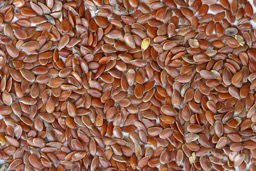Happy day! We are so excited to be welcoming back a fabulous guest contributor today. Say hello to Jessica, from SmartNutrition who is here to help us find some frugal substitutes for popular superfoods!

Frugal Superfood Swaps
Superfood. A few years ago I started noticing headlines with this word in it. It’s certainly an exciting idea.
Here it comes to save the dayyyy! Here to rescue your diet! No matter how deep a nutritional hole you find yourself in, a superfood will use its superfood-y senses to find you, pick you up, and fly you out.
Yes, superfoods are just like superheroes: fun to imagine, but not actually real.
The term is nothing but a clever marketing ploy. There are no legal or medical criteria that define what makes a food ‘super’.
Oh sure, they generally contain higher than average amounts of nutrients. They’re healthy foods to eat, certainly. But does that make these foods worthy of their title? Should you be seeking them out instead of “non-superfoods?”
No.
In real life the safety of a city is not determined by one super-powerful individual in a cape, but by the effectiveness of the police force and judicial system, combined with other factors like poverty and social supports. Similarly, in nutrition, health is not determined by a specific food that works wonders, but by the overall dietetic picture.
Superfoods are often either harder to find or more expensive to buy than other foods. This is a completely unnecessary expense/hassle. There are plenty of perfectly healthy replacements for these superfoods. Try swapping out these everyday, easily accessible, whole foods for the latest “superfoods” to hit a sensationalist article near you.
Eat blueberries instead of ______ (insert exotic berry of the year)
Unless you have an acai berry tree in your backyard, stick to whole fruits that are readily available in your produce or freezer department. Have you ever found an aronia berry at your grocery store? Probably not. Most likely these exotic berries are only available dried, juiced, or as an extraction. Scientists are only just beginning to discover how all the components in a food interact together to provide maximum health benefits. Extractions may not offer any additional benefit.
Choose locally available whole berries such as blueberries and cranberries. These are a better choice than the latest “superfruit” to hit the market. Your health and your pocketbook will thank you for this swap.
Eat brown rice instead of quinoa
Brown rice and quinoa are fairly interchangeable in most recipes. Quinoa does have a more concentrated amount of certain nutrients. It has about double the amount of fibre, protein, and iron. So, eating quinoa could certainly give a nutritional leg up if you’re eating a vegetarian diet. Vegetarians and vegans have to eat more strategically to consumer enough iron and high quality protein. But if you’re an omnivore, the added iron and protein shouldn’t be necessary if you only eat the occasional quinoa side dish.
Eat cacao instead of cocoa nibs or dark chocolate
It’s always exciting when new research shows that there really is a health benefit to eating chocolate! Of course, there’s always the caveat that only dark chocolate has benefits, not the sweet, waxy, milk chocolate stuff.
So, what is it in dark chocolate that sets it apart? It’s the cacao content!
The edible centre of the cocoa bean is called the cacao nib. Typically, this is melted down to a chocolate liquor and the cocoa butter is separated out. The rest is ground into cocoa powder.
The cocoa butter is essentially just the fat content of the cocoa bean. Cocoa powder is responsible for the majority of the health benefits. It’s a great source of antioxidants, iron, magnesium, copper, and manganese.
Of course, cocoa powder is less expensive than buying the whole cacao nibs or quality dark chocolate!
To recap: cacao nibs = cocoa butter + cocoa powder
dark chocolate = cocoa butter + cocoa powder + sugar
cocoa powder = cocoa powder
And cocoa powder is where it’s at for the nutritional value!
Drink Green Tea instead of Matcha
Green tea and matcha are made from the same plant: Camellia sinensis. The main difference is in preparation. Green tea is prepared by steeping the leaves in water, whereas matcha is made by grinding the leaves into a powder. The powder is then whisked together with hot water. So, when you drink matcha, you are actually ingesting the leaves.
Matcha results in a higher concentration of nutrients and anti-oxidants. But you can get the exact same benefit by drinking a little more green tea.
Eat flax instead of chia
Flax and chia seeds match up quite nicely, nutritionally speaking. Take a look at this table for comparison of ¼ cup of each:
Flax Seeds Chia Seeds
9.8 g omega 3 7.5 g omega 3
142 mg calcium 273 mg calcium
156 mg magnesium Negligible magnesium
11.9 g fibre 16.3 g fibre
Chia seeds are often touted for their high omega 3 content, but when you compare the two, flax seeds come out the winner!
Chia seeds win in the fibre category, as well as for their unique ability to bind over 9x their weight in water. This can be a benefit for appetite control.
Eat turmeric instead of turmeric
Tricked you! This spice is already cheap and easy to find, so there isn’t a swap out. I just wanted to highlight it! Turmeric has recently come into the limelight for its health properties. While it won’t cure every disease known to man, it has been shown to reduce chronic inflammation in the body. This condition is now recognized as a precursor to chronic illnesses such as diabetes and heart disease.
Conclusion
If you think your health is doomed because your pocketbook can’t afford all the latest food trends, don’t worry. The most “super” way to eat is to eat plenty of veggies and fruit, mostly whole foods, and a balance of food groups. This can be accomplished on any budget!
Jessica is a registered dietitian, recipe creator, nutrition counselor, and a hopeless gardener. She has visited 27 countries and hopes to see many more. She is passionate about helping people get the most nourishment, health, and enjoyment from the food they eat. She created the exclusive program, I Quit Overeating, to help people across the world rediscover a rewarding, joyful relationship with food. You can find her blogging over at www.smartnutrition.ca
Did you read Jessica’s post on decoding our food cravings? Amazing. Check it out:
And for something we ALL need – check out how to avoid a pig-out. 6 Steps to better will power.










Nicolette says
I love your articles and find them so fascinating and enlightening. Thanks for sharing in a way that is accessible for the general public.
Melanie says
Actually, it’s cacao, not cocoa. There is a difference. And try proof-reading before printing an article. I saw numerous mistakes.